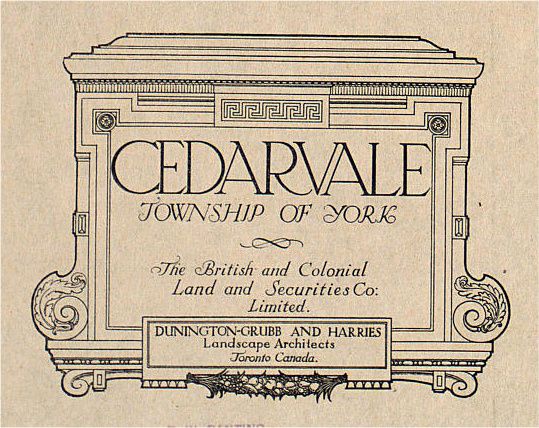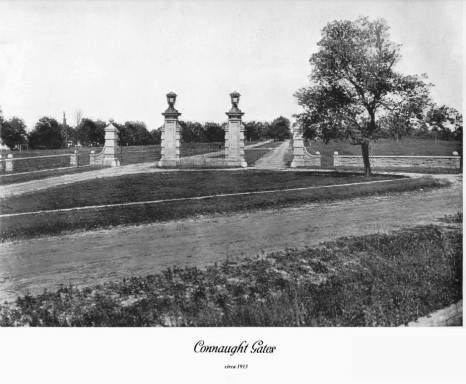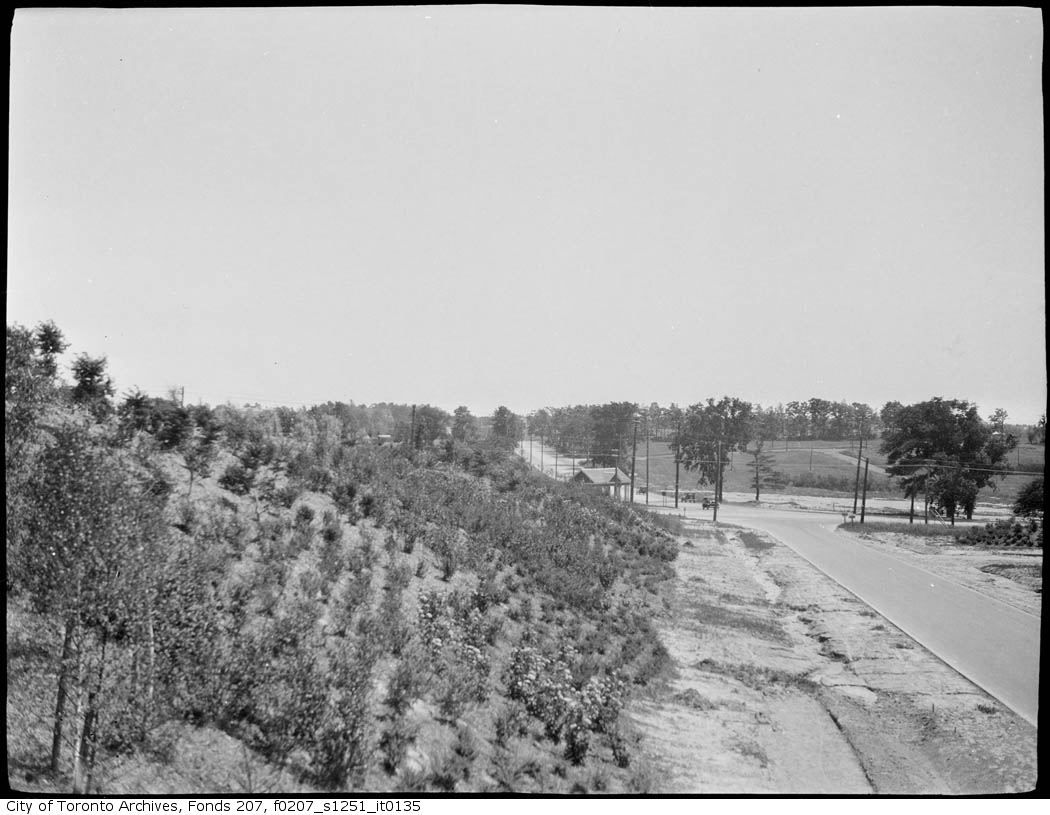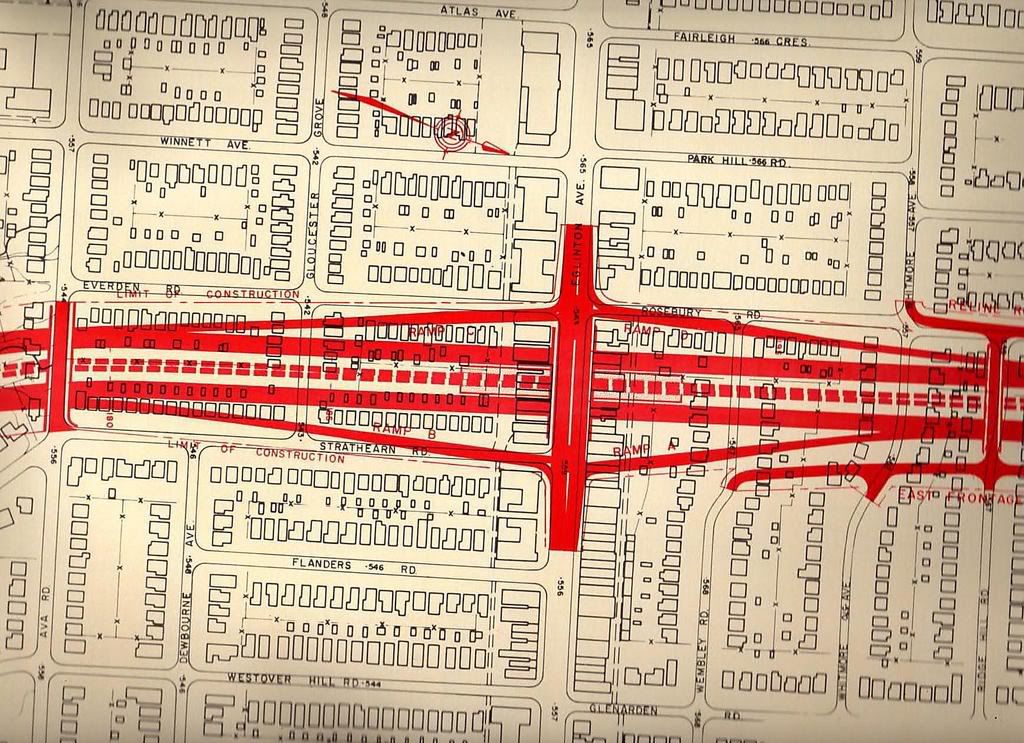Following all these pictures of North York, I'm impelled to post some pics of Cedarvale, my childhood neighbourhood. Bounded by Eglinton to the north, Bathurst to the east and the Cedarvale Ravine to the south (and west), Cedarvale was conceived as an upscale subdivision by none other than Sir Henry Pellatt just before World War I. The gates at Claxton Blvd. were part of his vision.
From
http://clara.asdi.ca/CLARA/Contacts.nsf/ConnaughtGates!OpenPage:
“These stone and iron gates, a developer’s folly, were placed here in 1913 by The British and Colonial Land and Securities Co. Ltd., a creation of Sir Henry Pellatt, the lord of Casa Loma. The gates were to be a grand entrance to an immense subdivision named Cedar Vale, that was to stretch from Vaughan Road to Eglinton Avenue, and about half as far west. This boulevard, to be named Connaught Drive after the Governor General of the day, was to progress majestically to a rather ornate circle, then veer right to cross Cedarvale Ravine and march proudly all the way to Eglinton Avenue. Large lots, expensive homes, parks, public squares and civic buildings were part of the company’s ambitious plans.
Like much of Sir Henry’s life, things didn’t work out that way. There was a recession on, and too many subdivisions like this on sale around the city. Then, in 1914, war broke out. People invested their money in war bonds rather than in real estate and for many years not much happened in this part of town. Finally the Home Bank went bankrupt, and with it most of Sir Henry’s investments. He gave his home, Casa Loma, to the city and moved into the carriage house. He died in 1939, a poorer man, but still immensely popular.
Some houses were built here through the twenties and thirties but much of the area north of the ravine was not fully developed until the 1950s. One of the reasons for this delay was the fact that the paving on Bathurst Street ended just a block north of here. From that point a muddy dirt road slid down the ravine and crossed the Castle Frank Stream on a rickety single lane bridge.
That is what this area was like in 1923 when Ernest Hemingway rented an apartment just up the street from here. He first came to Toronto in early 1920, hired by the Connable family as a companion for their disabled son while the rest of the family went to Florida for the winter. Ralph Connable, president of F.W.Woolworth Ltd., got Hemingway his first writing assignments with the Toronto Star.
Three years later Hemingway, now working for the Star in Paris, returned to Toronto with his wife Hadley, who was eight months pregnant. They moved to a tiny one-room apartment here, and a month later their son was born. However, unhappy with both the city and his job at the Star, the Hemingways returned to Paris just four months later.
It wasn’t until 1927 that the first high level bridge was built, carrying the (Bathurst) street smoothly across the ravine. Only then did building begin in earnest on the lands north of here. The neighbourhood that evolved here is a far cry from the plan Sir Henry had in mind in 1913, and perhaps we can be grateful. What we have today is more varied, more spontaneous, and probably more livable because the developer’s plan was forgotten.”
Terry McAuliffe Local Historian
The following is the exquisite original map, remiscent of Ebineezer Howard's "Garden City":
A detail showing the central gardens (a concept which morphed into Cedarvale Public School):
Certain elements of the plan did come to fruition, like some of the road alignments, and the gates at Claxton Boulevard and Bathurst:
The area at the time was a mixture of farmland and the ravine:
Bathurst at this point was still a muddy country road:
The Pellatt plan got modified and some residential development began in the late 1930's. Many of the original street names remained a mixture of UK references (Chiltern, Peveril, Camberwell) along with some post-WWI names like Menin and Flanders. Holy Blossom Synagogue relocated to Bathurst and Ava in 1938, as the area was becoming the new post-Kensington Market home of the Jewish community.
The GlenCedar bridge:
The following aerials from 1935, show a still laregely undeveloped Cedarvale:
Looking south on Bathurst from north of Eglinton:
Post-war, Eglinton began to develop as a major retail street (east of Bathurst it was primarily residential and was still part of the Village of Forest Hill):
1945 (NE corner of Bathurst and Eglinton):
The Nortown Theatre at Eglinton and Peveril 1948:
Power store Eglinton and Chiltern 1950's:
SE corner Bathurst and Eglinton 1953:
The Spadina Expressway would have gone through the Cedarvale Ravine and was vigorously opposed by the Cedarvale ratepayers:
Today:




































